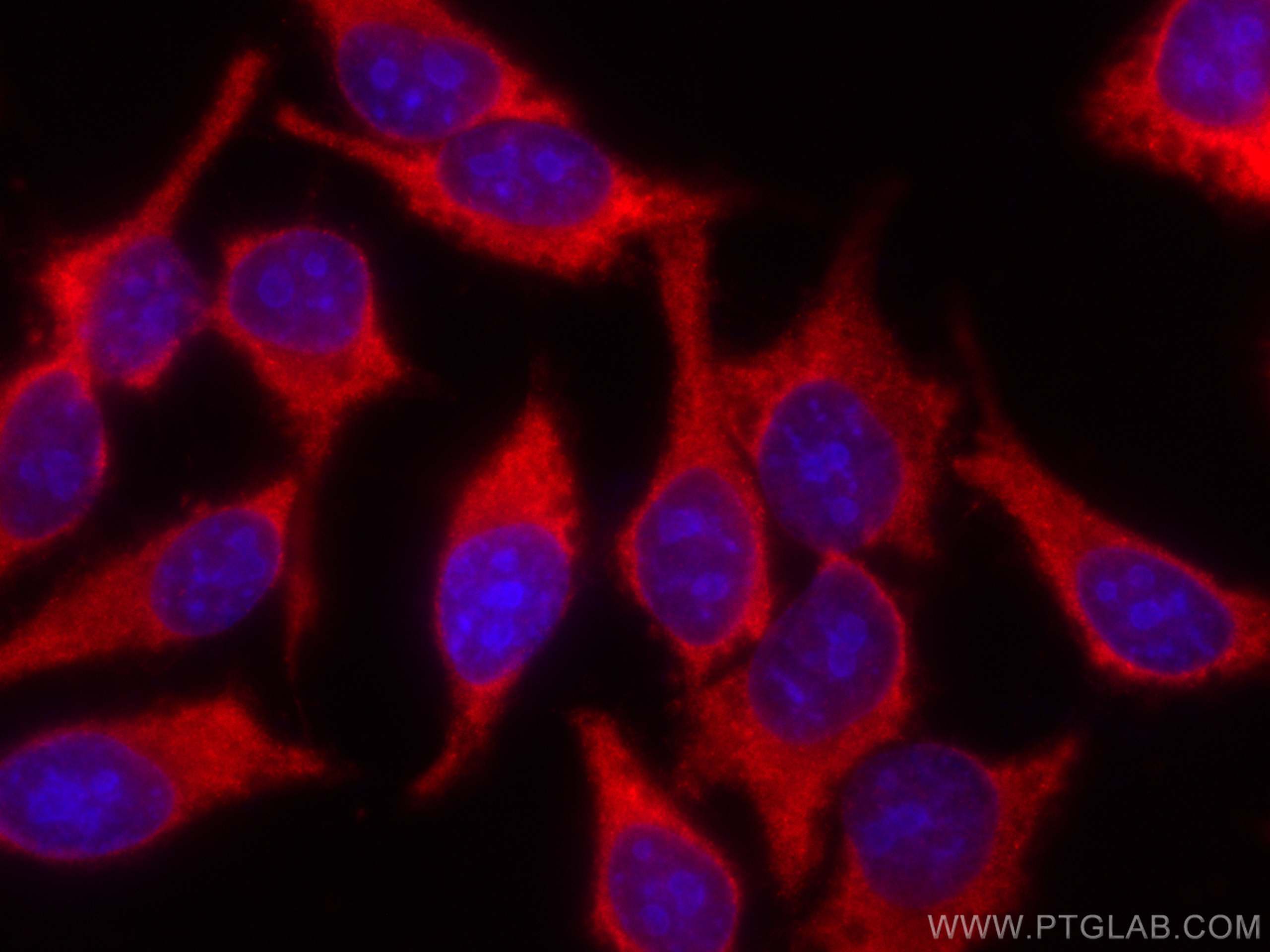Validation Data Gallery
Filter:
Tested Applications
| Positive IF/ICC detected in | HepG2 cells |
Recommended dilution
| Application | Dilution |
|---|---|
| Immunofluorescence (IF)/ICC | IF/ICC : 1:50-1:500 |
| It is recommended that this reagent should be titrated in each testing system to obtain optimal results. | |
| Sample-dependent, Check data in validation data gallery. | |
Product Information
CL594-67430 targets AMPD2 in IF/ICC applications and shows reactivity with Human, Mouse, Rat samples.
| Tested Reactivity | Human, Mouse, Rat |
| Host / Isotype | Mouse / IgG2b |
| Class | Monoclonal |
| Type | Antibody |
| Immunogen | AMPD2 fusion protein Ag8433 相同性解析による交差性が予測される生物種 |
| Full Name | adenosine monophosphate deaminase 2 (isoform L) |
| Calculated molecular weight | 879aa,101 kDa; 798aa,92 kDa |
| Observed molecular weight | 101 kDa |
| GenBank accession number | BC007711 |
| Gene Symbol | AMPD2 |
| Gene ID (NCBI) | 271 |
| RRID | AB_2934767 |
| Conjugate | CoraLite®594 Fluorescent Dye |
| Excitation/Emission maxima wavelengths | 588 nm / 604 nm |
| Form | Liquid |
| Purification Method | Protein A purification |
| UNIPROT ID | Q01433 |
| Storage Buffer | PBS with 50% glycerol, 0.05% Proclin300, 0.5% BSA , pH 7.3 |
| Storage Conditions | Store at -20°C. Avoid exposure to light. Stable for one year after shipment. Aliquoting is unnecessary for -20oC storage. |
Background Information
Adenosine monophosphate deaminase (AMPD) catalyzes the deamination of AMP to IMP and plays an important role in the purine nucleotide cycle. Three AMPDs are present in mammals named AMPD1/2/3. AMPD2 is the main activity present in adult human liver and is widely expressed in non-muscle tissues and cells (PMID: 8526848). AMPD2 has some isoforms with the molecular mass of 88-101 kDa.
Protocols
| Product Specific Protocols | |
|---|---|
| IF protocol for CL594 AMPD2 antibody CL594-67430 | Download protocol |
| Standard Protocols | |
|---|---|
| Click here to view our Standard Protocols |
